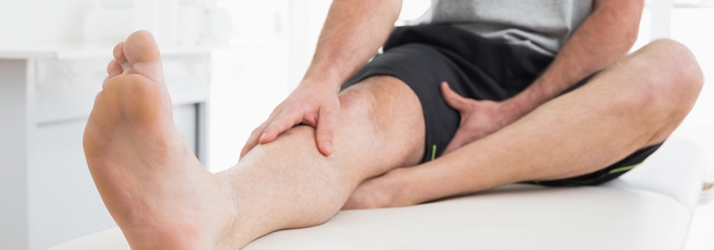KNEE PAIN IN Mt Pleasant SC

Knee pain can be caused by a sudden injury, an overuse injury, or by an underlying condition, such as arthritis. Treatment will vary depending on the cause. Symptoms of knee injury can include pain, swelling, and stiffness. There are a lot of people who suffer from knee pain in Mt Pleasant SC, and for many, there are some great treatment options.
Suffering From Knee Pain in Mt Pleasant SC?
Knee pain is an extremely common complaint, and there are many causes. It is important to make an accurate diagnosis of the cause of your symptoms so that appropriate treatment can be directed at the cause. We cover the most common knee injuries and causes as well as treatment methods in the article below.
Meniscus
The meniscus is a C-shaped piece of tough, rubbery cartilage that acts as a shock absorber between your shinbone and thighbone. It can be torn or injured if you suddenly twist your knee while bearing weight on it. A torn meniscus is one of the most common knee injuries. An injured meniscus is usually characterized as generalized knee pain and often has moments of locking or catching with movements of the knee. Generalized knee swelling may be present.
Although some torn meniscus may need surgery, they respond very well to nonoperative treatment by physical therapy. Specific meniscal repositioning techniques may be helpful if the meniscus is flapped. Generalized strengthening and mobility training of the knee will improve knee pain.
Patellofemoral Pain Syndrome (PFPS)
Patellofemoral pain syndrome is the most common cause of knee pain seen by doctors. It’s common in people who participate in sports, especially women and young adults. The most common symptom is knee pain that increases with stair climbing or squatting movements.
With PFPS, there is not a specific injury associated with pain. It is usually related to poor knee cap tracking when bending the knee and pain will be reduced with improving the tissue tension on the outside of the knee and overall muscular imbalances.
Application of Kinesio Tape (KT tape) or a knee brace has been shown to help short-term relief of PFPS.
Tendonitis / Jumpers’ Knee / Osgood Schlatters
Patellar tendonitis is a condition that is very common during a growth spurt for athletes that compete in higher level jumping and running activities.
Patellar tendonitis is characterized as knee pain just below the knee cap which is exacerbated by jumping, squatting, and running. Tenderness below the kneecap is very common. Patellar tendonitis is progressed to Osgoodschlatters when a bump in the bone develops just below the knee.
This is treated through physical therapy protocols of stretching and manual release of quadriceps musculature as well as patellar tendon to reduce inflammation.
ACL / PCL / MCL / LCL
These are the four main ligaments of the knee that provide stability during all activities. Each ligament provides stabilization in a different plane of motion for example the ACL helps to limit hyperextension of the knee. An injury to the knee may cause stretching or tearing to one or more of these ligaments.
Treatment following a ligamentous injury depends on severity of the injury and number of ligaments involved with possible meniscal involvement. A general pre-operative therapy protocol will be to reduce swelling of the knee and begin a stabilization protocol to limit the amount of joint play during higher levels of activity. A knee brace may be required initially until strength and stabilization is regained.
Runners Knee / ITB and syndrome
Runner’s knee is dull pain around the front of the knee. It may be caused by a structural defect, or a certain way of walking or running. A common cause of runner’s knee is tightness of the ITBand. A tight ITBand, which runs down the side of your leg, causes lateral tracking of the knee cap. This poor knee cap tracking causes grinding, rubbing, or clicking during walking or running and pain throughout the knee pain.
Improving tracking through manual release of tight muscles and strengthening of weak muscles are important to resolve this issue.
Knee Arthritis
Knee arthritis is one of the most common causes of knee pain. It is a progressive disorder, which means that it typically starts gradually and gets worse with time. In the beginning stages of arthritis pain may be minimal but as it progresses pain will increase, become more severe, and begin limiting function of the knee. Knee arthritis is aggravated by progressing age, previous knee injuries, or obesity placing increased stress to the knee.
Progressive knee arthritis may need to be surgically repaired by either a partial or total knee replacement but improving mobility with exercise and with therapy is important to reduce pain and grinding feelings that come with arthritis.
Quadriceps Pull/Tear
The quadriceps, or “quads,” are a group of four muscles in the thigh. A pulled quad can cause mild to severe pain depending on the grade of the pull. Quadriceps tears or pulls require a period of rest for healing usually between 4-6 weeks prior to re-initiating strengthening and stretching. Initial treatment involves reducing swelling, and a person may need continuing rest or physical therapy to recover fully.
Return to activity or return to sport physical therapy is necessary to reduce the risk of re-injury.
Hamstring Pull/Tear
The Hamstrings or “Hammies” are a group of three muscles on the back of each thigh and are frequently an area of complaint with many individuals complaining of tightness through that region . Hamstrings can be injured with quick sprinting or jumping activities and can be accompanied by an audible pop. Depending on the severity of the pull it may require between 4 – 8 weeks of physical therapy to return to all activities without pain and limping but sometimes recovery may take longer to recover due to certain areas of the muscle have less of a blood supply.
Fractures
Knee fractures are among the most common of the bone and joint injuries. Often, the degree of pain, the inability to walk, or concern that a bone may be broken is what might cause you to seek care in an emergency situation. A knee fracture is usually associated with swelling and bruising throughout the lower leg, ankle and the foot. A knee fracture will usually be treated with 6 weeks of immobilization through a brace or a cast with non weight bearing. This is followed by re-introduction of weight bearing, improving the range of motion and re-gaining the strength. Additional sports specific rehabilitation may be required to reintroduce higher levels of physical activities.
What To Do Next…
If you’re currently experiencing knee pain, My Chiro iQ Chiropractic happily welcomes you for a complimentary consultation with Dr. Ross to determine if chiropractic care is right for you. After an examination, he can provide an individualized approach to the root of the problem.
Call for your appointment today! (843) 766-4444
OFFICE HOURS
Monday
1:00pm - 6:00pm
Tuesday
8:00am - 5:00pm
Wednesday
8:00am - 5:00pm
Thursday
8:00am - 5:00pm
Friday
Closed
Saturday & Sunday
Closed
My Chiro iQ
419 Hibben St
Mt Pleasant, SC 29464



